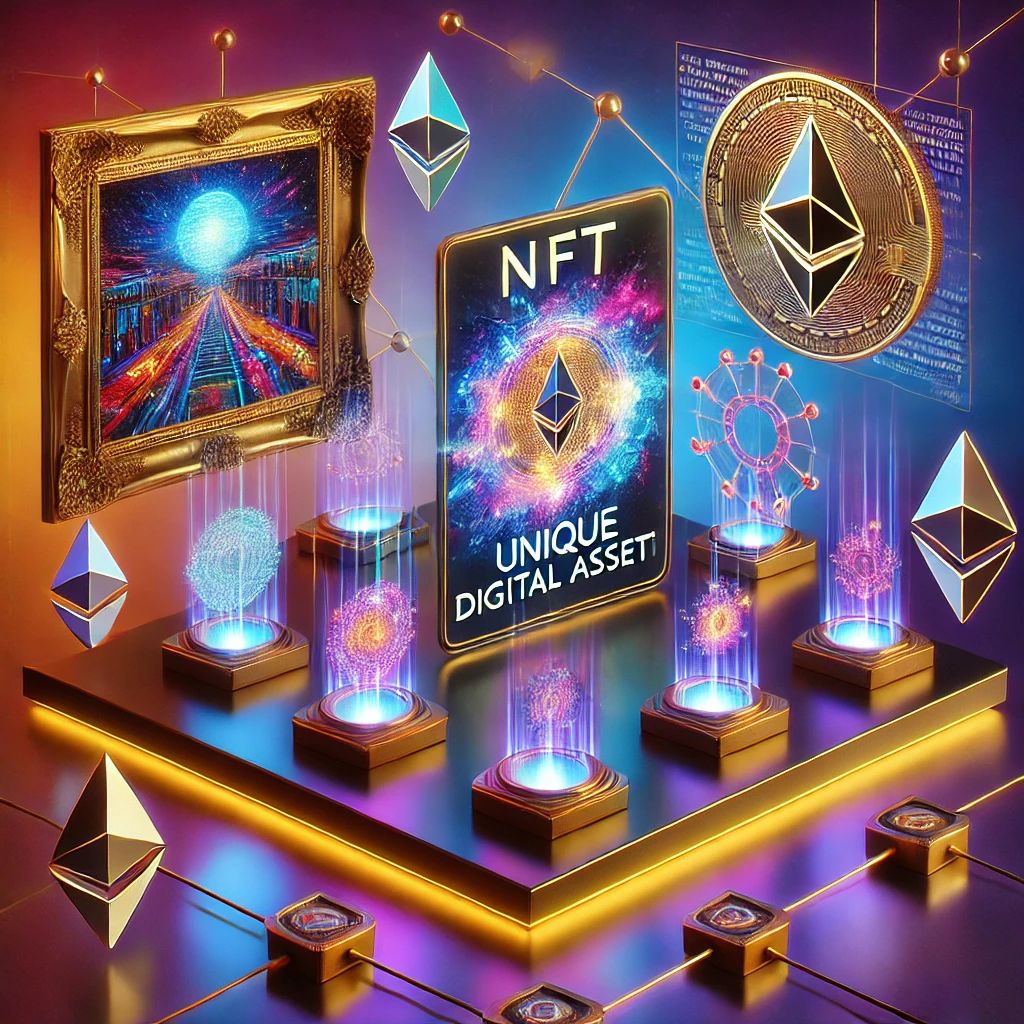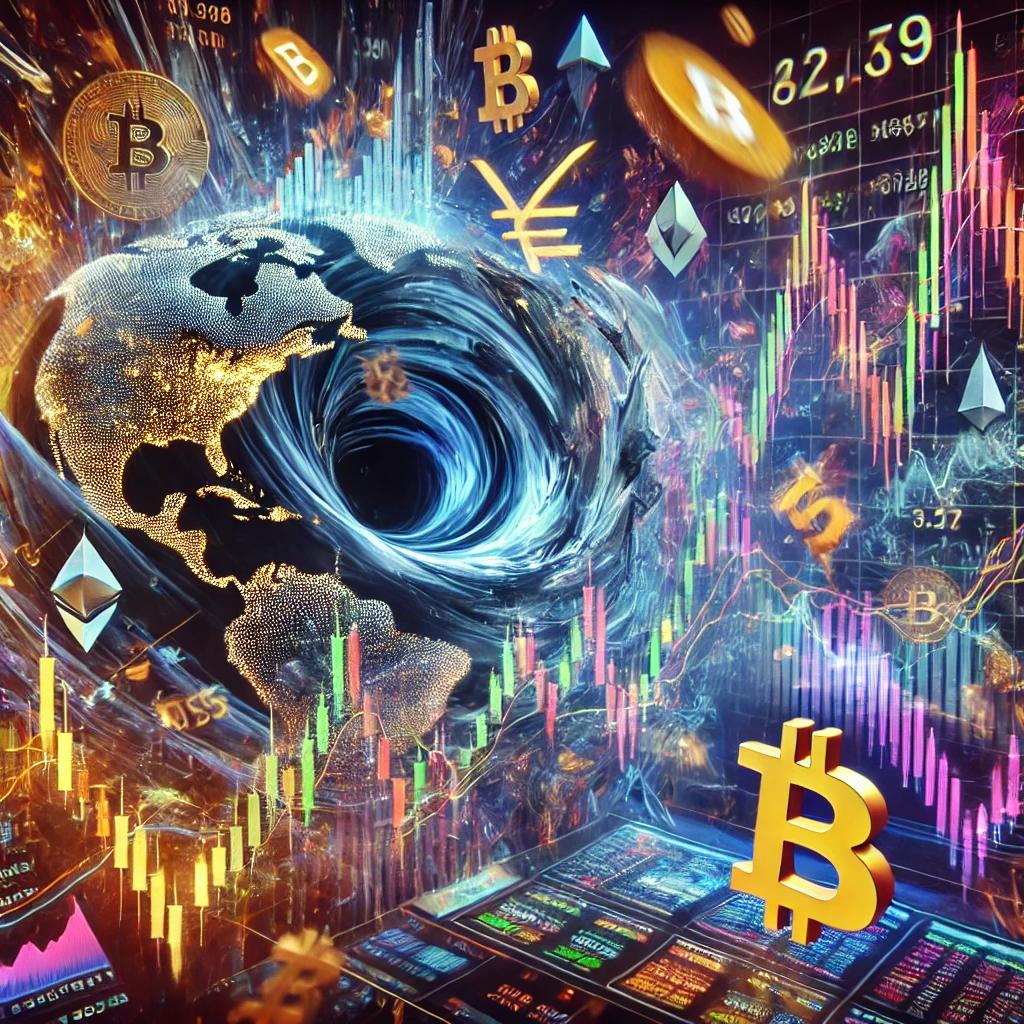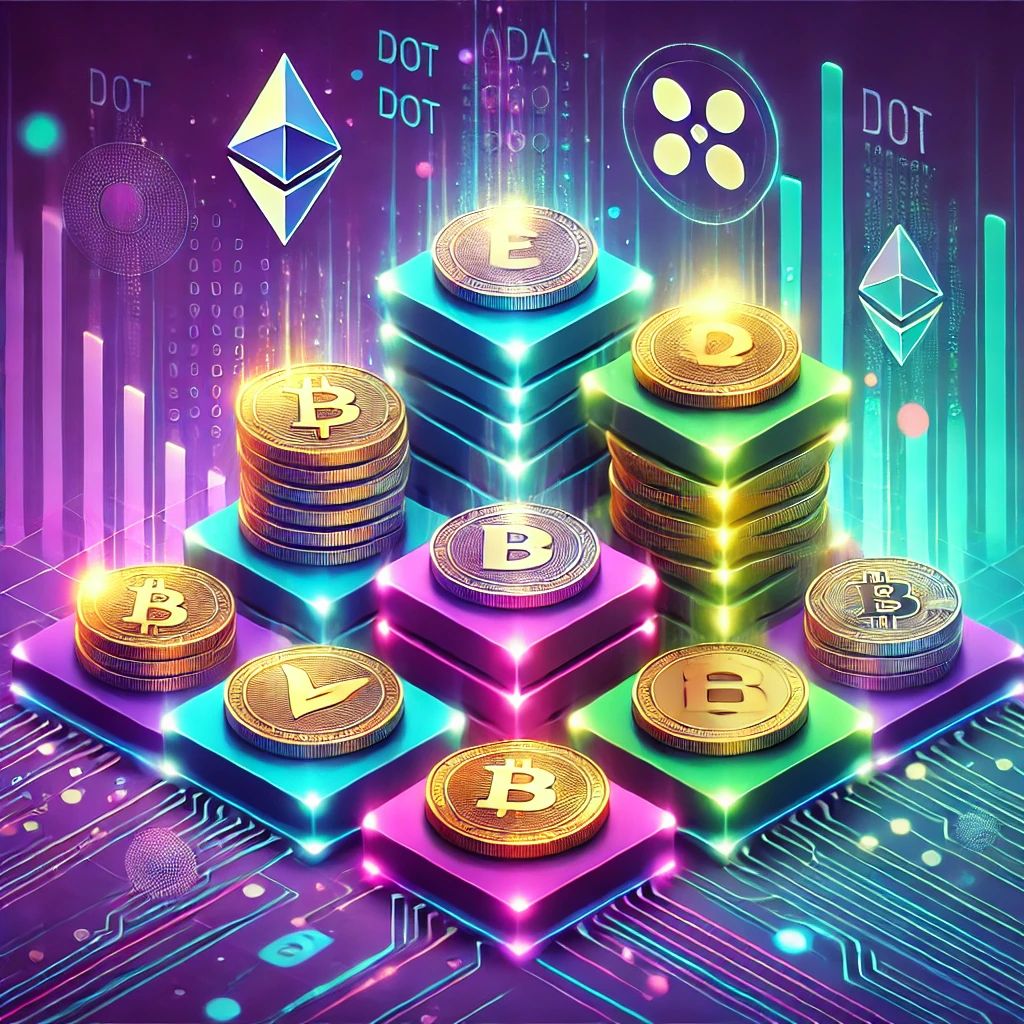NFTs (Non-Fungible Tokens) are unique digital assets that represent ownership of a specific object or file, such as artwork, music, or videos. Unlike cryptocurrencies, each NFT is unique and cannot be replaced by another identical token. This technology has revolutionized the art world and continues to push the boundaries of creativity.
What is an NFT?
NFT stands for Non-Fungible Token. These tokens are built on blockchain technology and certify ownership and uniqueness of a digital object.
Key Features of NFTs:
• Uniqueness: Each NFT has a unique code that makes it one-of-a-kind.
• Indivisibility: NFTs cannot be divided into smaller units, unlike Bitcoin.
• Transparency: All information about the creation and transfer of NFTs is recorded on the blockchain, making it publicly accessible and immutable.
How Do NFTs Work?
NFTs are created using smart contracts on blockchains such as Ethereum, Binance Smart Chain, or Solana. These smart contracts store the following data:
• The creator (author) of the token.
• Purchase and sale history.
• Metadata describing the asset.
To mint (create) an NFT, users select a platform such as OpenSea, Rarible, or Foundation, upload a digital file, and set parameters such as royalties for the creator.
How NFTs Are Transforming the Art World
1. Digitalization of Art
With NFTs, artists can sell their works in digital formats. Previously, digital art was easily copied and distributed, reducing its value. Now, NFTs provide a way to prove ownership, making each piece unique.
2. Direct Interaction with Audiences
NFTs remove intermediaries such as galleries or agencies, enabling artists to connect directly with buyers. This increases their income and expands their reach.
3. Automatic Royalties
Through smart contracts, creators can receive royalties (a percentage of every resale) automatically, ensuring a fairer system for artists.
4. Increased Accessibility
NFTs allow collectors worldwide to purchase art without leaving their homes, opening the market to millions of new buyers.
5. New Forms of Art
NFTs inspire artists to create interactive, multimedia, and animated works that cannot be replicated in physical form.
Examples of Successful NFT Projects in Art
1. Beeple:
In March 2021, Beeple’s digital artwork “Everydays: The First 5000 Days” sold for $69.3 million at Christie’s, making it the most expensive piece of digital art ever sold.
2. CryptoPunks:
A collection of 10,000 unique pixel characters became iconic and one of the most well-known NFT collections.
3. Bored Ape Yacht Club:
This collection of NFT apes has become a status symbol in the crypto art world.
4. Axie Infinity:
NFTs are used in gaming, where players buy and develop their characters.
Challenges and Risks of NFTs
1. Environmental Impact:
Minting and trading NFTs consume significant energy due to blockchain usage.
2. Speculation:
Some NFTs are bought solely for resale, creating a “bubble” risk.
3. Fraud:
Counterfeit NFTs and unreliable platforms can result in financial loss.
4. No Physical Object:
Purchasing an NFT does not always grant rights to the actual asset but only to the token.
The Future of NFTs
NFTs are expected to grow and integrate into new fields:
• Metaverses: NFTs could be used for purchasing virtual real estate, clothing, and other items.
• Music: Albums and concert tickets could be released as NFTs.
• Real-World Assets: NFTs could represent ownership of real estate or other valuable objects.
Conclusion
NFTs have revolutionized the art world, making digital creations valuable and accessible to collectors. This technology opens up new opportunities for artists and transforms the art market. However, it is essential to understand the associated risks and use only trusted platforms and wallets.
For beginners, platforms like OpenSea, Foundation, or Rarible are excellent starting points to explore the potential of NFTs and take your first steps into this exciting world.



